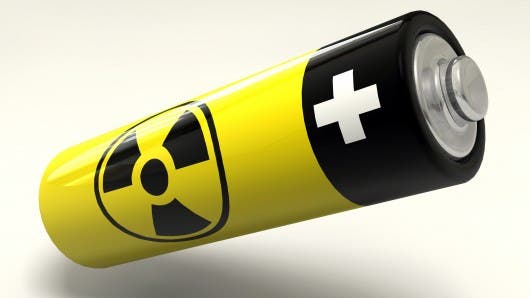
Though betavoltaics – battery technology that employs radiation as a means of power generation – has been around since the 1950s, developments thus far haven’t been the most promising. This may set to change after researchers at University of Missouri reported they’ve devised a nuclear-assisted battery, which works in a watery environment, that both lasts longer and is more efficient.
The team used the radioactive isotope strontium-90 to enhance the electrochemical conversion of energy in a water-based solution, while a nanostructured titanium dioxide electrode acted as the catalyst. Together, the catalyst and radiation, worked together to break water into hydrogen and oxygen at the cost of less energy. Similarly to a photovoltaic cell, when the high-energy beta radiation passes through the platinum and the nanoporous titanium dioxide, electron-hole pairs are produced within the titanium dioxide, creating an electron flow and a resultant electric current.
[ALSO READ] Why your battery is dying
Unlike a solar cell, there are much fewer free radical produced inside the battery since the photon energy is mostly in the visible spectrum. Even so, most photocatalytic methods employed to split water don’t produce any free radicals at all. In the case of the University of Missouri nuclear battery, the free radicals traps or recombines the kinetic energy in water molecules, which means the radiation isn’t wasted entirely and gets converted into electricity. The researchers report a 53.88% efficiency for their nuclear battery. Moreover, the device can work at room temperature and pressure.
“Water acts as a buffer and surface plasmons created in the device turned out to be very useful in increasing its efficiency,” said associate professor Jae W. Kwon, of the College of Engineering at MU. “The ionic solution is not easily frozen at very low temperatures and could work in a wide variety of applications including car batteries and, if packaged properly, perhaps spacecraft.”
Regarding safety, this isn’t actually an issue. In fact, you might already be using nuclear devices and didn’t know it like fire detectors in bedrooms and emergency exit signs in buildings. The nuclear battery, described in Nature, developed at MU might find applications in spacecraft, vehicles or in other areas where longevity and efficiency are important.






